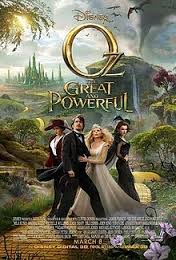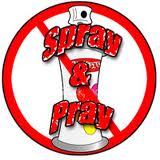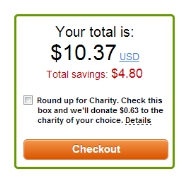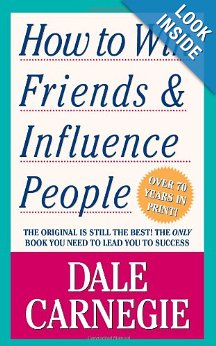 Welcome to O.D. Fridays at DonorDreams blog. Every Friday for the foreseeable future we will be looking at posts from John Greco’s blog called “johnponders ~ about life at work, mostly” and applying his organizational development messages to the non-profit community.
Welcome to O.D. Fridays at DonorDreams blog. Every Friday for the foreseeable future we will be looking at posts from John Greco’s blog called “johnponders ~ about life at work, mostly” and applying his organizational development messages to the non-profit community.
In a post titled “Not Pretty,” John talks about Pablo Picasso’s painting of Gertrude Stein and how it was a portrait of what he thought she would look like as an older woman. John used this story to springboard off into organizational development and change management themes. It was the following passage from his post that really got me thinking:
“First off, how the organization performs in the future may hardly resemble how the organization is performing today … Time — aging — will have its way. Things will change. Without the critical development of structure, process, culture, and talent, time — and change — will wreak havoc. Capabilities will erode. New capabilities will be needed.”
When I read this, I visualized rocks being pounded by ocean waves. In real-time, the rocks seem to win because waves disperse and scatter into mist and foam. However, the reality of the situation is the absolute opposite. The waves are actually winning. Right? Because in the long run those rocks turn into sand as a result of the pounding they take.
In this analogy, your non-profit agency is the rock and you’re more than likely eroding.
 As time passes, the waves of change crash against your seemingly rock solid organizational exterior, but change is slowly occurring. Here are just a few examples:
As time passes, the waves of change crash against your seemingly rock solid organizational exterior, but change is slowly occurring. Here are just a few examples:
- You lose employees
- You lose board volunteers
- Your strategic plan is aging (in fact, all of your plans are aging)
- Your technology systems are becoming outdated and old
- Your base of donors gets older and their individual capacities change
- Best practices and cutting edge practices morph and refine themselves (e.g. who saw online giving as an option 50 years ago?)
- Your community’s economic foundation is eroding and changing (e.g. industrialization to information, local to global, etc)
Whether you feel it or not, your non-profit organization is being pounded into one big pile of sand.
And you are more than likely making things worse!
In recent years, there has been a lot written about “The Nonprofit Starvation Cycle” by folks like Dan Pallotta (via his books Uncharitable and Charity Case) as well as the recent open letter titled “The Overhead Myth” from GuideStar, Charity Navigator and Better Business Bureau.
I think an article by Ann Goggins Gregory and Don Howard in Stanford Social Innovation sums up the mistake many of us are making very well:
“A vicious cycle is leaving nonprofits so hungry for decent infrastructure that they can barely function as organizations—let alone serve their beneficiaries. The cycle starts with funders’ unrealistic expectations about how much running a nonprofit costs, and results in nonprofits’ misrepresenting their costs while skimping on vital systems—acts that feed funders’ skewed beliefs. To break the nonprofit starvation cycle, funders must take the lead.”
Is this you? Are you skimping? Are you living for today and ignoring tomorrow?
 I really like the last sentence in this previous passage because it dovetails with John’s organizational development blog post about Pablo Picasso so very well.
I really like the last sentence in this previous passage because it dovetails with John’s organizational development blog post about Pablo Picasso so very well.
In a previous post titled “Ending the ‘Overhead Myth’ is everywhere,” I was skeptical. I honestly don’t think an open letter to donors or a ton of online chatter will change donor perceptions about the value of investing in what John describes as “…structure, process, culture, and talent…”
If you’re going to engage your donors in this discussion because they are the key to allowing you to invest in what they perceive as “overhead,” then you’re going to need someone like Pablo Picasso to help you assess what your organization will look like in the future. This information will help you develop your case for support, which is what you need before engaging your donors in this conversation.
Is this way too much work for you to consider? No problem . . . I’ll see you at the beach! 😉
What is your agency doing to engage donors and win their hearts and minds when it comes to “The Overhead Myth” and the “Nonprofit Starvation Cycle”? Who is your Pablo Picasso helping you with organizational assessment (both present and future)? If you’re thinking about using an external consultant to help you with all of this . . . I think I know someone who wants to help you! 😉
Here’s to your health!
Erik Anderson
Founder & President, The Healthy Non-Profit LLC
www.thehealthynonprofit.com
erik@thehealthynonprofit.com
http://twitter.com/#!/eanderson847
http://www.facebook.com/eanderson847
http://www.linkedin.com/in/erikanderson847

 For example, I concluded that I would want the super human ability to “read people’s minds“. As I started thinking about why I might want that superpower, I concluded that knowing what a donor wants and how they want it would make me one of the best fundraising people on the planet.
For example, I concluded that I would want the super human ability to “read people’s minds“. As I started thinking about why I might want that superpower, I concluded that knowing what a donor wants and how they want it would make me one of the best fundraising people on the planet. When I used to work at Boys & Girls Clubs of America (BGCA), my colleagues were responsible for the existence of something called theFUNDRAI$INGbank, which is a special webpage embedded inside of the intranet accessible to local affiliates. We outsourced maintenance of this page to FundRaisingInfo.com. There were many different resources located on “The Bank” including a free service called “Ask The Expert“.
When I used to work at Boys & Girls Clubs of America (BGCA), my colleagues were responsible for the existence of something called theFUNDRAI$INGbank, which is a special webpage embedded inside of the intranet accessible to local affiliates. We outsourced maintenance of this page to FundRaisingInfo.com. There were many different resources located on “The Bank” including a free service called “Ask The Expert“.
 There are 9-keys to “inspiring and managing yours board for fundraising success”. In fact, the reality is that these 9-keys are the same nine things you need to do to “engage” anyone in anything. However, I believe that these nine concepts are not all equal. While all are important, I have come to realize that the most important and most difficult engagement tool was best summed up by the “Wizard of Oz’s” Tim Man in this
There are 9-keys to “inspiring and managing yours board for fundraising success”. In fact, the reality is that these 9-keys are the same nine things you need to do to “engage” anyone in anything. However, I believe that these nine concepts are not all equal. While all are important, I have come to realize that the most important and most difficult engagement tool was best summed up by the “Wizard of Oz’s” Tim Man in this  As a new business owner who just opened up a nonprofit & fundraising consulting practice, I’ve made it my business to “get around”. In addition to visiting with many of my oldest and dearest non-profit friends in Elgin, Illinois, I recently attended a regional Boys & Girls Club conference and engaged countless staff and board volunteers from around the country through a very aggressive social media strategy including Twitter, Facebook, LinkedIn and this blog. While I don’t want to exaggerate, I was surprised at how many conversations looked and sounded like this
As a new business owner who just opened up a nonprofit & fundraising consulting practice, I’ve made it my business to “get around”. In addition to visiting with many of my oldest and dearest non-profit friends in Elgin, Illinois, I recently attended a regional Boys & Girls Club conference and engaged countless staff and board volunteers from around the country through a very aggressive social media strategy including Twitter, Facebook, LinkedIn and this blog. While I don’t want to exaggerate, I was surprised at how many conversations looked and sounded like this So, last week was an amazing week for my blog. It appears that I struck upon a topic of interest for the non-profit community when I focused on special events and how some agencies make poor decisions around return on investment (ROI) decisions and volunteer utilization. While I promised myself that I would end that discussion thread about zombies, I decided this morning over coffee to continue down “the yellow brick road” a little further by changing metaphors. It is Halloween season after all. LOL
So, last week was an amazing week for my blog. It appears that I struck upon a topic of interest for the non-profit community when I focused on special events and how some agencies make poor decisions around return on investment (ROI) decisions and volunteer utilization. While I promised myself that I would end that discussion thread about zombies, I decided this morning over coffee to continue down “the yellow brick road” a little further by changing metaphors. It is Halloween season after all. LOL This last weekend the
This last weekend the  If your agency is not in a position where you can make your donors’ wishes come true, then you better have skilled staff who possess talents and skills like The Wizard.
If your agency is not in a position where you can make your donors’ wishes come true, then you better have skilled staff who possess talents and skills like The Wizard.
 The concept of “spray and pray” in resource development is simply sending out many appeals (aka shotgun effect), and then waiting for (aka hoping and praying) that enough donors respond so that you can make your goal. “Spray and pray” doesn’t just refer to direct mail. Back in the day, I used it in annual campaigns where I asked fundraising volunteers to identify five people from their social network, sit down with them in-person, and ask for a pledge or contribution. If your fundraising program is still loaded with “spray and pray” strategies, then you’re probably struggling because those days are long since over.
The concept of “spray and pray” in resource development is simply sending out many appeals (aka shotgun effect), and then waiting for (aka hoping and praying) that enough donors respond so that you can make your goal. “Spray and pray” doesn’t just refer to direct mail. Back in the day, I used it in annual campaigns where I asked fundraising volunteers to identify five people from their social network, sit down with them in-person, and ask for a pledge or contribution. If your fundraising program is still loaded with “spray and pray” strategies, then you’re probably struggling because those days are long since over. think millions of other donors) would be:
think millions of other donors) would be:
 They wanted me to round my total up to the nearest dollar. What I thought I had read was that they would donate (out of their pocket) the amount of the rounded sum. (You can see the screenshots of the information they provided me to the right of this paragraph)
They wanted me to round my total up to the nearest dollar. What I thought I had read was that they would donate (out of their pocket) the amount of the rounded sum. (You can see the screenshots of the information they provided me to the right of this paragraph) Welcome to O.D. Fridays at DonorDreams blog. Every Friday for the foreseeable future we will be looking at posts from John Greco’s blog called “
Welcome to O.D. Fridays at DonorDreams blog. Every Friday for the foreseeable future we will be looking at posts from John Greco’s blog called “ So, what is the solution? John suggests that acceptance is the key.
So, what is the solution? John suggests that acceptance is the key.